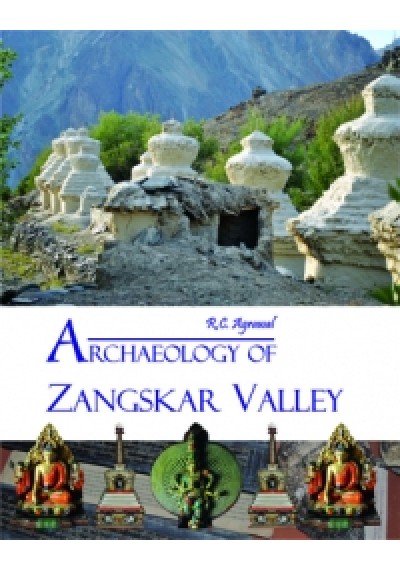PUBLICATION DETAIL

Archaeology of Zangskar Valley
| Author | : R.C. Agrawal |
| ISBN | :978-93-83221-20-2 |
| Price | : |
| Size | :29 cm |
| Year | :2018 |
| Format | :Hardbound |
| Description | : xxv+193 p., 40 line drawings, 141 col. & 193 b/w illus., Appendix, Bibliography, Index |
| Qty |
About the Book
Zangskar, Zanskar popularly known as the land of white copper is a part of Ladakh of Jammu and Kashmir state. Buddhism reached here around eighth century ce and with some lull continued to thrive. Prior to eighth century ce, Zangskar was inhabited by the Dards, the original inhabitants of Ladakh region.
The first European (Hungarian) who visited Zangskar was Csoma de Koros. He arrived in 1823 and spent considerable time in Zangla and Phugtal monasteries studying the Tibetan language and grammar. He produced a dictionary of Tibetan-English language and died in Kolkata. After him several scholars visited Zangskar and studied the various aspects of Zangskari life, but no comprehensive attempt was made to explore the area from archaeological point of view.
In the present study, an attempt has been made to explore the rich archaeological wealth of the region by studying the sites and monasteries and objects housed therein. The whole study has been divided into several chapters covering sculpture and carvings, monasteries, chortens and mane walls, having carvings. Along with the monasteries some nunneries were also surveyed, a neglected area in the study of Himalayan Buddhism. Here an attempt has been made through extensive field survey to analyse the monastic system prevalent and economic pattern of the monastery. Detailed analysis has also been carried out of the paintings executed in various monasteries.
The brief life-sketch of Lotsava Rinchen-Zang-po who revived Buddhism and Alexander Csoma de Koros who visited Zangskar during the nineteenth century, and stayed is also appended.
About the Author
Dr R.C. Agrawal (b. 1947) joined Archaeological Survey of India in 1972. He explored and excavated a number of sites in various parts of the country. He also participated in excavations at Purana Qila, Delhi; Mathura and conducted excavations at Hampi in Karnataka in the year 1979-80. During 1985-1990, he explored Buddhist sites in Ladakh region and carried out excavations at Tisseru stupa. In 1992, he identified the Buddhist site of Satdhara for large-scale conservation and excavation in Madhya Pradesh. He initiated the conservation of number of monuments in Madhya Pradesh. He has been closely associated with many academic bodies and has published research papers on art, archaeology, paintings and rock art. He is widely travelled and member of ICOM, ICOMOS and other academic bodies.
In his career he has served as Director (Monuments), Joint Director-General, Institute of Archaeology, Member Secretary, Indian Council of Historical Research, Pro-Vice Chancellor, National Museum Institute and Professor of Museology, Principal Director, Architecture Heritage Division, INTACH. Presently, he is a visiting faculty to Architectural Conservation Department (SPA), Institute of Archaeology, Archaeological Survey of India, National Museum Institute and President of Rock Art Society of India.






